I am playing with Mandelbrot and Julia sets and I encountered interesting problem. The Mandelbrot set can be rendered in double precision until zooms of around 2^56 at any place. However, the Julia set sometimes produces artifacts much sooner like around zoom of 2^20 (see image below).

The interesting thing is that this occurs only in some areas but the rest of the image is OK and you can even continue zooming in. This usually happens in the center of clusters and near origin [0,0].
- Is this really caused by double arithmetic errors?
- Can one avoid those artifacts without need of use arbitrary precision arithmetic?
- Why it occurs only in some areas? Are those areas somewhat special?
Coords
I do not have coords of the image above but another one can be found here (pictured below):
- Center = [0, 0]
- Zoom 2^26
- C = [-8.01030596311150589e-01, 1.56495138793530941e-01]
Arbitrary precision
Running the code with arbitrary precision seem to help but only a little. 82 bits of arbitrary precision is better than just double but then 232 bits is exactly the same as 82. Maybe my implementation has flaws? The only number that has lower precision is the argument C that is taken from the Mandelbrot set and it has the precision required to capture it in the depth where it was set - I don't think that this matters because adding extra zeros to make the precision high won't change the result. The immediate variables that are computing the result are all high precision.
Double precision:

Arbitrary precision 82 bits:

Arbitrary precision 232 bits:

Code
This is the core of my code (unnecessary parts pieces omitted):
public void UberCompute(UberComplex origin, UberComplex size,
UberComplex initialCoord, int maxIters, double[,] result,
ref bool stop) {
int wid = result.GetLength(1);
int hei = result.GetLength(0);
int area = wid * hei;
int precision = Math.Max(origin.Precision,
initialCoord == null ? 0 : initialCoord.Precision);
UberComplex coord = new UberComplex(precision);
UberComplex step = new UberComplex(precision);
UberFloat.Div(step.Re, size.Re, wid);
UberFloat.Div(step.Im, size.Im, hei);
UberFloat imed1 = new UberFloat(precision);
UberFloat imed2 = new UberFloat(precision);
UberFloat imed3 = new UberFloat(precision);
for (int y = 0; y < hei; ++y) {
// double yt = (double)y / hei;
// double im = origin.Im + yt * size.Im;
UberFloat.Mul(imed1, step.Im, y);
UberFloat.Add(coord.Im, imed1, origin.Im);
if (stop) {
break;
}
for (int x = 0; x < wid; ++x) {
// double xt = (double)x / wid;
// Complex coord = new Complex(origin.Re + xt * size.Re, im);
UberFloat.Mul(imed1, step.Re, x);
UberFloat.Add(coord.Re, imed1, origin.Re);
result[y, x] = UberIterate(initialCoord ?? coord,
coord, maxIters, smooth, imed1, imed2, imed3);
}
}
}
public double UberIterate(UberComplex coord, UberComplex initialCoord, int maxIters,
UberFloat imed1, UberFloat imed2, UberFloat imed3) {
Contract.Requires(imed1.Precision == initialCoord.Precision);
Contract.Requires(imed2.Precision == initialCoord.Precision);
Contract.Requires(imed3.Precision == initialCoord.Precision);
int precision = coord.Precision;
UberFloat re = new UberFloat(precision, initialCoord.Re);
UberFloat im = new UberFloat(precision, initialCoord.Im);
int i = 0;
do {
// re * re + im * im > maxRadiusSq
UberFloat.Mul(imed1, re, re);
UberFloat.Mul(imed2, im, im);
UberFloat.Add(imed3, imed1, imed2);
if (imed3 > MAX_RADIUS_SQ) {
break;
}
// newRe = re * re - im * im + coord.Re;
UberFloat.Sub(imed3, imed1, imed2);
UberFloat.Add(imed1, imed3, coord.Re);
// im = 2.0 * re * im + coord.Im;
UberFloat.Mul(imed2, re, im);
UberFloat.Mul(imed3, imed2, 2);
UberFloat.Add(im, imed3, coord.Im);
// re = newRe;
UberFloat.Swap(re, imed1);
} while (++i < maxIters);
if (i == maxIters) {
return Double.NaN; // Did not diverged.
}
return i;
}
Other software
I have tested Ultra Fractal and it has this issue as well:
